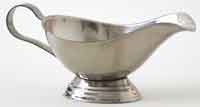Difference Between Steel and Stainless Steel
• Categorized under Objects | Difference Between Steel and Stainless Steel
 Steel vs Stainless Steel
Steel vs Stainless Steel
Steel is an element that has iron, carbon and some other proportions of elements in it. Stainless steel is made by using at least 10.5% of chromium, which makes the steel stainless. There are many impurities found in the iron, such as silicon, phosphorous, sulfur and manganese, and during the process of making steel, all these impurities are removed. The difference between steel and stainless steel is that during the process of making steel into stainless steel, chromium, nickel, nitrogen and molybdenum is added to make stainless steel. Stainless steel is resistant to corrosion, and steel is prone to stains and rusting. Stainless steel does not rust or corrode easily.
If we compare the strength of both steel and stainless steel, we should overlook the general misconception that one is stronger than the other. Stainless steel has a low carbon content which cannot be hardened, and regular steel is slightly stronger than grade 2 steel, and at the same time it is significantly weaker if compared in the terms of hardness. If we want to find out the difference between the magnetic properties of both the elements, we see that stainless steel is usually nonmagnetic. Some of the types of stainless steel are magnetic, except Series 3xx and 4xx. Such a type of stainless steel is cheaper, and does not normally have any addition of nickel. When compared to stainless steel, steel is magnetic.
Steel has different types to classify its carbon content, such as high carbon, medium carbon and low carbon. Stainless steel has several types as well, and its types are classified by their micro-structures, such as Austenitic stainless steel, Ferritic stainless steel, Martensitic stainless steel and Duplex stainless steel. Steel is used for dies, cutting tools, sheeting and structural forms, welding and tooling. Stainless steel is used primarily for its anti-corrosive element, as it has been developed to resist a number of corrosive environments. It ensures workhouse safety, a longer lasting lifespan and hygienic food preparation surfaces. It is versatile, has less maintenance costs, and has a very high scrap value on decommissioning. It is possible to melt down and recycle, and it is ecologically safe and earth-friendly. The almost sixty grades of stainless steel differ depending on their degree of magnetism, the percentage of chromium, and the proportion of the other elements. In the steel material, carbon and other elements act as a hardening agent. Hardness, elasticity, ductility and tensile strength of the steel are controlled by the varying amounts of alloy, and their distribution in the steel. For increased hardness and strength, more carbon content is added. Today, people usually consider the iron and steel industry as the same thing, but historically, they were separate products.
Summary:
1. Separating impurities from iron produces steel, and adding various elements produces stainless steel.
2. Steel is magnetic, and stainless steel is nonmagnetic, except some grades of stainless steel that are magnetic.
3. Its carbon content such as high, medium and low classifies steel.
4. There are four types of stainless steel, and almost sixty grades are available.
5. Stainless steel is non corrosive and earth-friendly, and steel is prone to stains and rusting.
- Difference Between an Atomic Bomb and a Hydrogen Bomb - May 23, 2015
- Difference Between Multiplexer and Decoder - May 21, 2015
- Difference Between Chicken pox and Small pox - June 3, 2014
Sharing is caring!
Search DifferenceBetween.net :
Cite
APA 7
, . (2010, March 24). Difference Between Steel and Stainless Steel. Difference Between Similar Terms and Objects. https://www.differencebetween.net/object/difference-between-steel-and-stainless-steel/.
MLA 8
, . "Difference Between Steel and Stainless Steel." Difference Between Similar Terms and Objects, 24 March, 2010, https://www.differencebetween.net/object/difference-between-steel-and-stainless-steel/.
Leave a Response
Written by : charm. and updated on 2010, March 24
See more about : metal, steel
